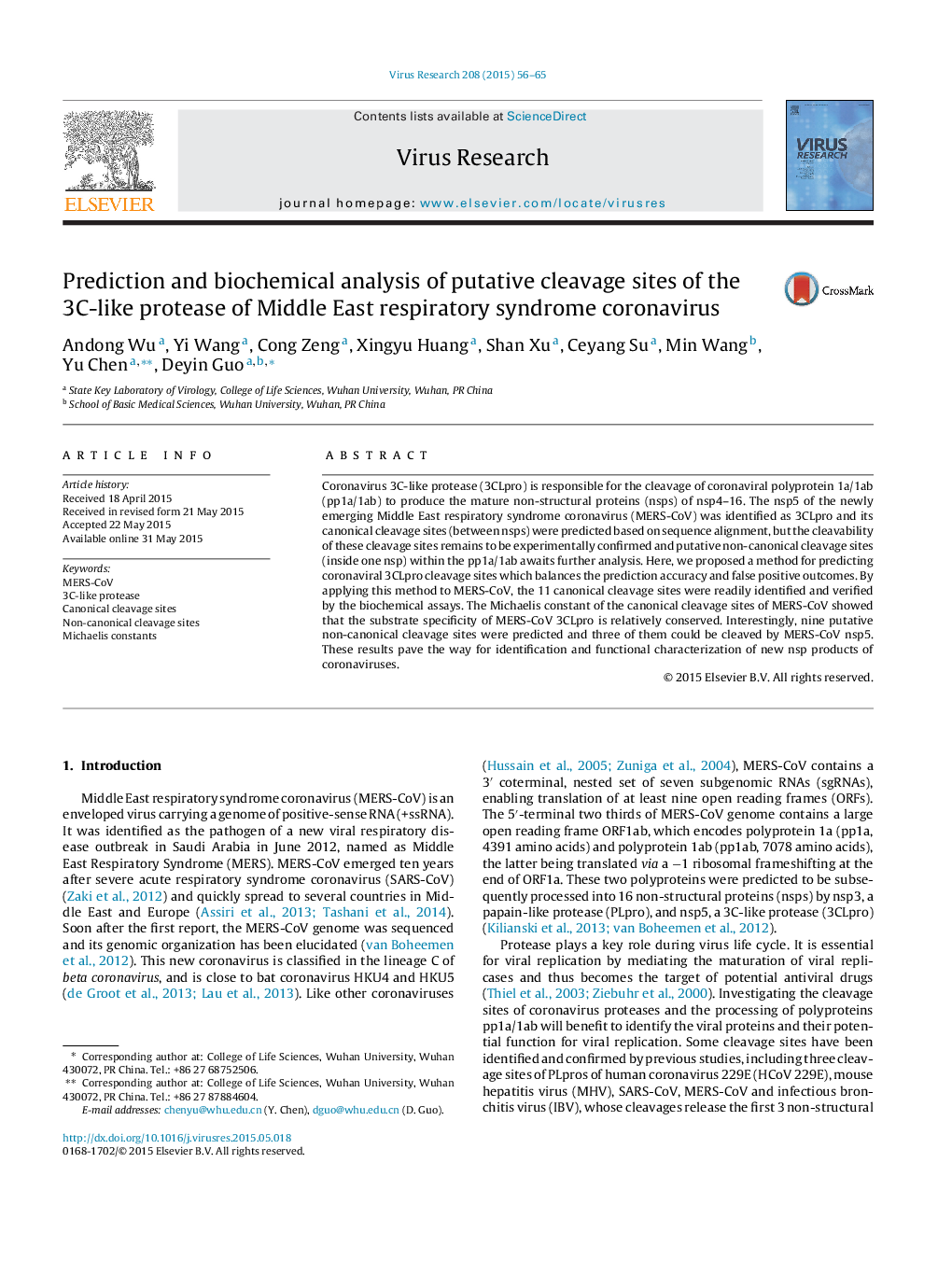| Article ID | Journal | Published Year | Pages | File Type |
|---|---|---|---|---|
| 3428114 | Virus Research | 2015 | 10 Pages |
•A prediction method of coronaviral 3CLpro cleavage sites was proposed to balance the accuracy and false positives.•Three of the nine putative non-canonical cleavage sites were verified, which are located upstream to nsp4.•All 11 canonical cleavage sites of MERS-CoV 3CLpro were confirmed and the Michaelis constants were calculated.
Coronavirus 3C-like protease (3CLpro) is responsible for the cleavage of coronaviral polyprotein 1a/1ab (pp1a/1ab) to produce the mature non-structural proteins (nsps) of nsp4–16. The nsp5 of the newly emerging Middle East respiratory syndrome coronavirus (MERS-CoV) was identified as 3CLpro and its canonical cleavage sites (between nsps) were predicted based on sequence alignment, but the cleavability of these cleavage sites remains to be experimentally confirmed and putative non-canonical cleavage sites (inside one nsp) within the pp1a/1ab awaits further analysis. Here, we proposed a method for predicting coronaviral 3CLpro cleavage sites which balances the prediction accuracy and false positive outcomes. By applying this method to MERS-CoV, the 11 canonical cleavage sites were readily identified and verified by the biochemical assays. The Michaelis constant of the canonical cleavage sites of MERS-CoV showed that the substrate specificity of MERS-CoV 3CLpro is relatively conserved. Interestingly, nine putative non-canonical cleavage sites were predicted and three of them could be cleaved by MERS-CoV nsp5. These results pave the way for identification and functional characterization of new nsp products of coronaviruses.
